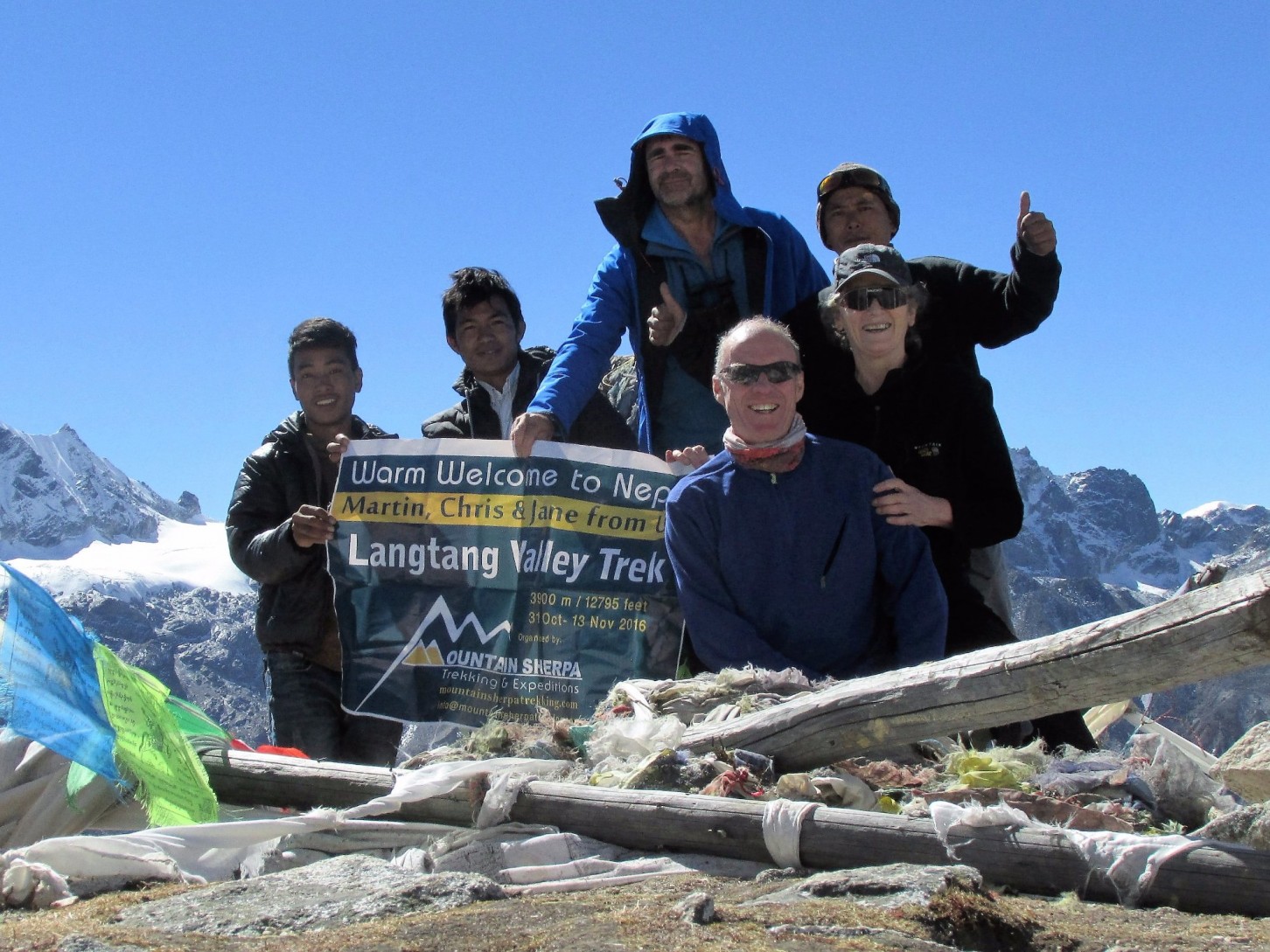-
Pasang Sherpa (Managing Director)
+977-9851060947
Since 1998 15,000+ Happy Guests Sherpa Owned & Operated Company

Discover the Magic of Langtang Valley and Gosaikunda Lake: A Trekker’s Paradise
Nestled in the heart of Nepal, the Langtang Valley is a hidden gem that offers an enchanting blend of natural splendor and cultural heritage. This breathtaking region is home to two remarkable treks: the Langtang Valley Trek and the Gosaikunda Lake Trek. Easily accessible from Kathmandu, these trails provide an unforgettable journey into the Himalayas, perfect for those seeking adventure, serenity, and inspiration.
Langtang Valley Trek: Nature’s Masterpiece
The Langtang Valley Trek takes you through quaint villages, lush forests, and awe-inspiring mountain vistas, where peaks like Langtang Lirung and Ganesh Himal dominate the skyline. It’s a peaceful escape with fewer crowds, allowing you to soak in the pristine beauty of the Himalayas. This trek is ideal for those with limited time but a big appetite for adventure.
Gosaikunda Lake Trek: Sacred Serenity at 4,380 Meters
The Gosaikunda Lake Trek leads you to the sacred, crystal-clear waters of Gosaikunda Lake, revered in Hindu mythology as the creation of Lord Shiva. The trail reveals over 100 shimmering lakes surrounded by panoramic mountain views, creating an experience that’s both spiritual and visually stunning.
Combine the Treks for the Ultimate Adventure
For those with more time and a thirst for challenge, combine the Langtang Valley and Gosaikunda Lake trek. This extended journey immerses you in charming villages, rhododendron forests, and dramatic landscapes while offering a glimpse into the rich culture of the Langtang region.
Why Choose Langtang?
So, pack your trekking boots and set out to explore this Himalayan wonderland. Whether it’s the tranquility of Langtang Valley or the mystique of Gosaikunda Lake, an adventure of a lifetime awaits you!
Choosing the Best Mode of Transportation for Your Langtang and Gosaikunda Trek
Planning your trek in the Langtang region involves selecting the right transportation, which can significantly impact your journey's comfort and convenience. Here's an informative guide to help you make the best choice.
Starting Your Langtang Valley Trek
The traditional starting point for the Langtang Valley Trek is Syabrubesi, but now, you can drive further to Kamjin Village or even closer to Sherpagaun, saving time and energy.
Why Skip Syabrubesi?
Syabrubesi, while functional, lacks scenic charm and can feel crowded. Instead, staying in Sherpagaun offers:
Recommended Transportation:
Private Jeep: Highly recommended for a smooth and comfortable journey.
Starting Your Gosaikunda Lake Trek
The trek to Gosaikunda Lake begins from Dhunche, another prominent starting point in the Langtang region.
Distance and Duration:
Why Choose Private Transportation?
Whether starting from Sherpagaun or Dhunche, opting for a private jeep ensures a memorable and enjoyable start to your trekking adventure. Let Mountain Sherpa Trekking arrange your transportation for a seamless experience to the Langtang Valley or Gosaikunda Lake.
Essential Langtang trek permit:
If you’re planning to trek in Nepal’s stunning Langtang region, a few essential permits are required to ensure a smooth and legal journey. First, you’ll need a TIMS (Trekkers' Information Management System) card, which serves to track and ensure the safety of trekkers. This can be acquired either at the Nepal Tourism Board office in Kathmandu or by working with a registered trekking agency like Mountain Sherpa Trekking, which simplifies the process.
Another crucial requirement is the Langtang National Park permit, granting you access to the pristine trails and natural beauty of this protected area. You can obtain the permit at the Nepal Tourism Board office in Kathmandu or at the entry checkpoint in Dhunche, a common starting point for the Langtang Valley Trek. Permit fees vary depending on the trekker’s nationality and the season, so it’s worth confirming the latest rates before your trip.
With these permits in hand, you’ll be ready to explore the captivating landscapes of Langtang while contributing to the preservation and management of this remarkable trekking destination.
Why Sherpa Guides Are Essential for a Safe and Unforgettable Langtang Trek
For a safe and unforgettable trekking experience in Nepal’s Langtang region, it’s essential to partner with an experienced and responsible Sherpa company. These local experts offer not just quality services but also unparalleled guidance through the breathtaking Himalayan terrain.
Choosing a Sherpa guide ensures a journey led by someone who is not only deeply familiar with the trails but also culturally connected to the region. Sherpas are renowned for their reliability, honesty, and exceptional care for trekkers. They understand the challenges of high-altitude trekking and provide invaluable support, from crafting flexible itineraries to offering insightful knowledge about the local culture and environment.
Safety is a top priority when trekking in remote regions, and Sherpa guides are well-trained to handle emergencies, altitude sickness, and any unforeseen challenges that may arise. Their friendly and attentive approach ensures that your trek is both enjoyable and stress-free.
For detailed tips on staying safe and making the most of your Langtang trek, check out this guide: Top Expert Tips for a Safe and Enjoyable Langtang Trek Adventure. With the right Sherpa company by your side, you can embark on a truly remarkable adventure with peace of mind.
Follow Us:
Facebook | Instagram | X

E-mail us
info@mountainsherpatrekking.com
![]()
Write us to on WhatsApp: +977-9849643731